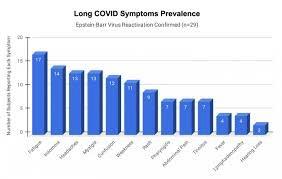 The Bureau of Labor Statistics estimates that there are 10.6 million vacant jobs in the U.S. as of the beginning of January 2022. Reasons for the disinclination of available workers to take advantage of job opportunities include Government support payments, inadequate wages and benefits, unfavorable work environment and frequently in the case of women, lack of childcare. Recently, the Brookings Institute raised the question of chronic “long” COVID estimating that 15 percent of unfilled jobs could be attributed to the lingering effects of the infection.
The Bureau of Labor Statistics estimates that there are 10.6 million vacant jobs in the U.S. as of the beginning of January 2022. Reasons for the disinclination of available workers to take advantage of job opportunities include Government support payments, inadequate wages and benefits, unfavorable work environment and frequently in the case of women, lack of childcare. Recently, the Brookings Institute raised the question of chronic “long” COVID estimating that 15 percent of unfilled jobs could be attributed to the lingering effects of the infection.
It is now apparent that approximately a third of COVID patients continue to experience one or more symptoms for at least three months after recovery from an infection. This implies that 31 million working-age U.S. residents could be constrained by chronic COVID effects. The Brooking study suggests that with 31 million patients experiencing symptoms for an average of three months, approximately 4.5 million could have been unfit for work at any time over the past 20-months.
 The Trades Union Congress in the U.K. determined that 25 percent of those suffering from chronic COVID” were not actively working. This translates to approximately 1.1 million U.S. residents out of work at any time due to chronic COVID. The Trades Union Congress determined that almost half of those affected, comprising 2.1 million workers, were unable to complete their assigned shifts and accordingly worked fewer hours.
The Trades Union Congress in the U.K. determined that 25 percent of those suffering from chronic COVID” were not actively working. This translates to approximately 1.1 million U.S. residents out of work at any time due to chronic COVID. The Trades Union Congress determined that almost half of those affected, comprising 2.1 million workers, were unable to complete their assigned shifts and accordingly worked fewer hours.
The Brookings Institute is urging the Census Bureau and the Bureau of Labor Statistics to incorporate questions on chronic COVID into surveys in order to gather additional data that could be of assistance in relating COVID incidence rates with the future availability of labor.
It is axiomatic that full vaccination, now regarded as a series of three mRNA vaccines, reduces the intensity of clinical symptoms of COVID, sharply lowers rates of hospitalization and almost eliminates ICU treatment and hence mortality. It would be fair to presume that immunization against COVID through vaccination and or exposure to the prevalent Omicron variant will also eliminate or ameliorate chronic COVID symptoms. This is a further justification for employers to encourage and incentivize workers to be fully vaccinated and to follow common sense principles of prevention.
 As of January 28th 64 percent of the U.S population had received two doses of an mRNA vaccine and 41 percent were fully vaccinated. A total of 169,000 new cases were diagnosed on January 28th but the 7-day rolling average is down by 34 percent. Unfortunately deaths due to COVID are up 29 percent over 14-days with a tally of 1,050 recorded on January 28th. Hospitalizations, ICU admissions and deaths from COVID are in the overwhelming proportion among the unvaccinated.
As of January 28th 64 percent of the U.S population had received two doses of an mRNA vaccine and 41 percent were fully vaccinated. A total of 169,000 new cases were diagnosed on January 28th but the 7-day rolling average is down by 34 percent. Unfortunately deaths due to COVID are up 29 percent over 14-days with a tally of 1,050 recorded on January 28th. Hospitalizations, ICU admissions and deaths from COVID are in the overwhelming proportion among the unvaccinated.